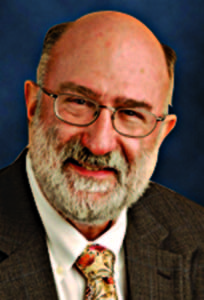 There are few people who have had quite as significant an impact on the interdisciplinary field of Jewish studies as Sander L. Gilman, who will deliver the University of Louisville’s Second Annual Jewish Heritage Fund for Excellence Lecture on Sunday, November 8, at 1 p.m. in the Cochran Auditorium in Strickler Hall. The event will include a free reception.
There are few people who have had quite as significant an impact on the interdisciplinary field of Jewish studies as Sander L. Gilman, who will deliver the University of Louisville’s Second Annual Jewish Heritage Fund for Excellence Lecture on Sunday, November 8, at 1 p.m. in the Cochran Auditorium in Strickler Hall. The event will include a free reception.
Dr. Gilman’s talk is titled “Circumcision: An Index of Difference and/or the Health Exception?” and will address compelling questions concerning the sometimes fraught relationship between religion and medicine. What happens when religion and medicine compete or are allied?
The United States is the nation in which infant male circumcision is the most widely accepted and practiced, but for “health” rather than for “religious” reasons. Immediately after birth, 55 percent of infant male children have their foreskins surgically removed. The number of male infants circumcised in the U.S. for any reason has declined today from the 1970’s and ’80’s. In Europe, in contrast, only 10 percent of boys are circumcised.
What happens when these two aspects of the public sphere overlap? In what contexts does circumcision occur as a health practice or risk? What are the implications of health-related/medically-indicated circumcision for religious practice?
Dr. Gilman is currently distinguished professor of the Liberal Arts and Sciences as well as professor of psychiatry at Emory University. For 25 years, he was a member of the humanities and medical faculties at Cornell University where he held the Goldwin Smith Professorship of Humane Studies. For six years, he held the Henry R. Luce Distinguished Service Professorship of the Liberal Arts in Human Biology at the University of Chicago and for four years was a distinguished professor of the Liberal Arts and Medicine and creator of the Humanities Laboratory at the University of Illinois at Chicago.
His numerous groundbreaking books (80 in total) have widely influenced Jewish scholars working in the fields of history, sociology, cultural studies, literature, psychology, philosophy, and beyond. Perhaps his most famous book to date is the classic 1986 study, Jewish Self Hatred.
Gilman’s contention in this book is that the Jews historically struggled to become indistinguishable from their enemies, and that in the process of assimilation, they have had to internalize the anti-Semitism of their host nations. Since the Middle Ages the Jews of Central Europe, in order to survive, have had to grapple with an unacceptable Jew within – and disown him. What this has in practice entailed is that most virulent and contradictory, form of anti-Semitism, Jewish anti-Semitism.
Gilman describes this as the inevitable double bind of the outsider: the only acceptable Jew is the non-Jew. Gilman argues that “the ubiquitousness of self-hatred … has shaped the self-awareness of those treated as different perhaps more than they themselves have been aware.”
The protracted identity crisis of the European Jews is most clearly evoked by Gilman’s vivid descriptions of individuals making sense of their Jewish identity. Heine, Marx, Kraus and Freud all become exemplary in their various confused passionate solutions to the problem of having been born Jews in largely hostile German-speaking countries. All of them, apart from Freud, evolved a sense of themselves by defining themselves against an unacceptable version of the Jew.
Each in his own distinctive way was preoccupied with the idea of the Jew betraying himself through his language, which revealed either a small-minded, vulgar materialism or the pretentious aspiration to a higher culture that had always excluded him. What the Jews had – at least, according to Gilman, since the 18th-century invention of the schlemiel – was a tradition of specifically Jewish humor, a humor in which vulnerability is exploited as a kind of strength.
Obviously on the verge of self-contempt, it is also always on the verge of parodying the implicit anti-Semitism of the audience. It is never clear, as it were, who the joke is on. One of the highlights of this book is its rich demonstration of just how crucial Jewish jokes were to the early development of psychoanalytic theory.
Another important book is The Jew’s Body, which draws on a wealth of medical and historical materials to illuminate fascinating aspects of the anti-Semitic rhetoric about the Jewish body and mind, including medical and popular depictions of the Jewish voice, feet and nose. Case studies illustrate how Jews have responded to such public misconceptions as the myth of the cloven foot and Jewish flat-footedness, the proposed link between the Jewish mind and hysteria, and the Victorians’ irrational connection between Jews and prostitutes.
Gilman is especially concerned with the role of psychoanalysis in the construction of anti-Semitism, examining Freud’s attitude towards his own Jewishness and its effect on his theories, as well as the supposed “objectiveness” of psychiatrists and social scientists. In The Jewish Frontier, he reimagines Jewish history as the story of people living on a “frontier” – a place where all peoples, including Jews, interacted to define themselves and those they encounter in reality or fantasy.
Gilman looks at the representation of Jews and Jewishness in film, literature and history. He addresses a wide range of questions, including: how has the Holocaust been represented in comic films? What do fantasies about the Jewish origin of smoking in Europe, debates about Jewish genetic disease, and literary representations from Proust and Kafka to Zadie Smith tell us about the imagination of Jewish identity?
Some of Professor Gilman’s more recent publications include critically acclaimed books such as The Third Reich Sourcebook, Race in Contemporary Medicine: Biological Facts and Fictions, and Fat: A Cultural History of Obesity.
Please join UofL for this exciting gathering.



